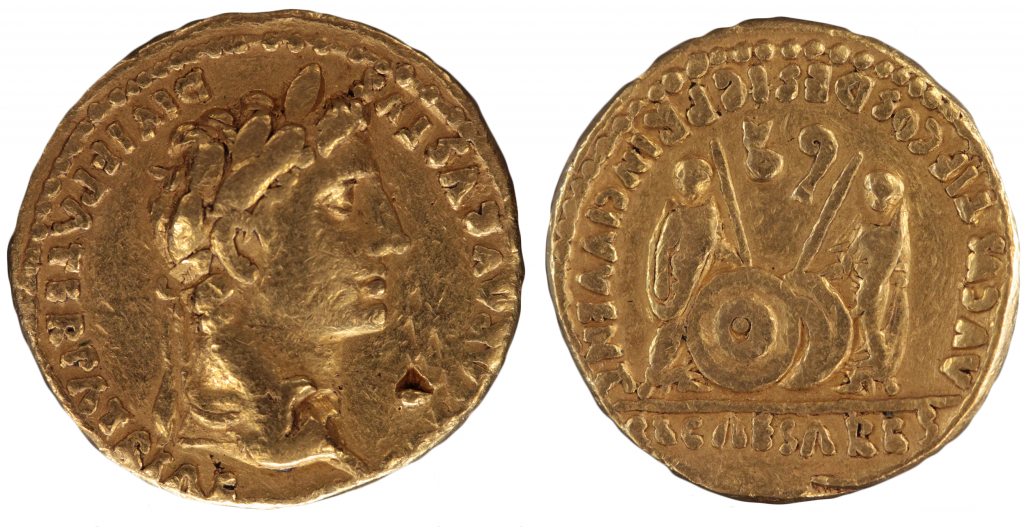March 6, 2015, by Will Leveritt
2027 years ago today: Augustus took the title Pontifex Maximus
Text by Bethan Huby
Image by Kelly Grimshaw and Katy Davies
The founder of the Roman Empire and first emperor, Augustus, was born Gaius Octavius on 23rd September 63 BC. Through his mother, Atia Balba Caesonia, he was connected to the distinguished family of the Julii, being the great-nephew of Julius Caesar. In 27 BC he accepted from the senate a package of rights and powers which effectively made him Rome’s first emperor, and was given the name Augustus. Augustus’ rule lasted until his death in AD 14 when he was deified during Tiberius’ reign. He was widely held to have given the population peace and security following the decades of civil wars that defined the Late Republic; later emperors modeled themselves and their role within the institution on the divine Augustus.

AU aureus of Augustus. Ob. has laureate head of emperor right, [CA]ESAR AVGVSVS DIVI F PATER PATRIAE. Rev. has Gaius and Lucius standing with spears and shields, simpulum and lituus above, AVGVSTI F COS DESIG PRINC IVVENT, CL CAESARES in ex. 7.45g, 18mm, 11 o’clock.
Stability is displayed in propaganda-driven artworks such as the Via Labicana Augustus where Augustus appears in his capacity as Pontifex Maximus. This statue shows Augustus with his toga pulled over his head (capite velato). Augustus’ statues including the Via Labicana Augustus showed the emperor’s various roles to the expanding population of the Empire; as a military general, a religious leader and political front-runner.
Given their wide dissemination coins were significant in distributing the emperor’s image and roles, perhaps more so than statues. This was particularly important for Augustus as the first emperor establishing his authority after the civil wars. Depicting Augustus in the capacity of Pontifex Maximus illustrates religion’s importance to the empire, the political position of Augustus, and connection to political offices as in the Roman Republic, promoting a sense of continuity.
Politics and religion are interlinked. Augustus’ adoption of the title Pontifex Maximus in 12 BC embodied this notion. After his death in AD 14 this connection continued up until the Emperor Gratian (AD 375-383), who was the first emperor to refuse the title due to the changes to the State’s religion and the growing influence of Christianity. Nevertheless, not long after Gratian laid it aside the Popes took up the title, with the head of the Roman Catholic Church to this day often being associated with the term.
No comments yet, fill out a comment to be the first

Leave a Reply